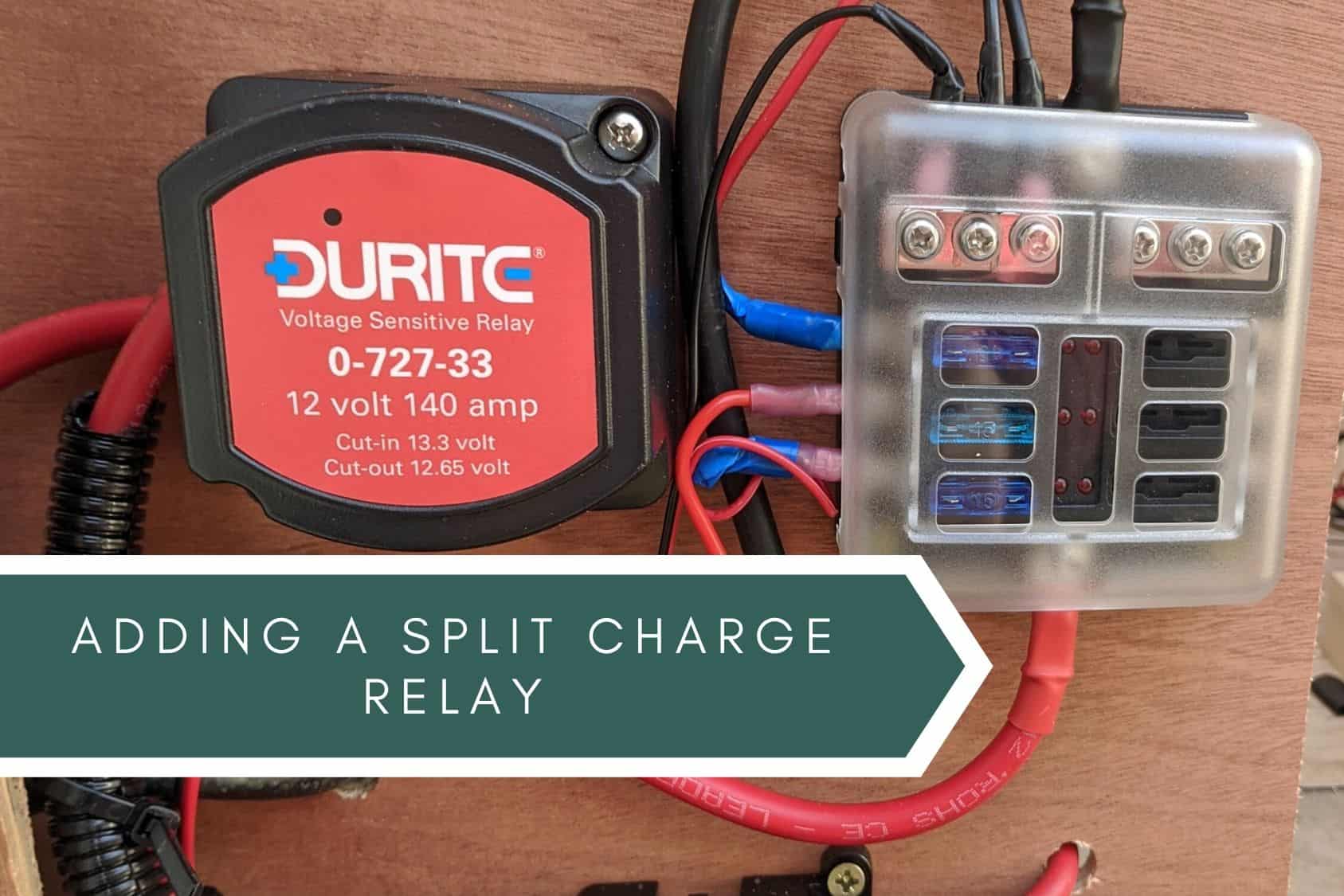If you’re looking to keep your leisure battery topped up in your van you are really looking at two popular methods, solar power or a split charge relay (if not both). We’re going to talk a little bit about what a split charge relay is, what it does and what options you have when installing one into your van; we’ll also link to the ones we’ve tried and also the kit we used in our most recent campervan conversion.
What is a split charge relay?
A split charge relay allows us to simultaneously charge our leisure battery and our starter battery from the engine’s alternator. Normally when you drive your car (or van) your starter battery will be charged by the voltage produced by the engine’s alternator. You are able to connect your leisure battery to your starter battery so that the alternator will then charge both batteries at the same time.
You might be asking “I can connect these two batteries simply with big enough cables so why do you need a split charge relay?” Well, when you connect both batteries they essentially work as one big one which means when you run your electronics from your leisure battery it will drain both batteries. If you drain your starter battery too much you won’t be able to start you car. A split charge relay will prevent you from draining both batteries when running all of your electrics.
It does this by disconnecting the two batteries and thus making them separate again so that when you run your electrics you simply draw the power from your leisure battery. How it disconnects the batteries is dependent on the type of split charge relay you choose to install.
What options do I have for a split charge relay?
There are 3 main types of split charge relays which you will see in most campervan conversions, a manual switch, an automatic switch and a voltage sensing relay.
Manual switching relay
As the name suggests a manual switching relay is simply a switch you flick on to connect the batteries and switch off to disconnect them. The biggest benefit to this type of set up is that is is extremely simply to install and the most inexpensive type of relay. Installation is as easy as connecting the two batteries together with some 16mm cable with both a fuse and a manual switch spliced into the live cable. This switch can then be mounted at a convenient location for you to be able to switch it on before starting the van and switch off once you have stopped running the van. This switch will isolate each battery meaning you won’t drain the starter battery when running your electronics in the back of the van.
The downside to such a relay is that it is entirely dependent on you remembering to either switch on or off the relay, forgetting to do so will either end up on your leisure battery not charging or worse your starter battery going flat leaving you stranded.
Automatic switching relay
An automatic switch relay connects directly to the engine’s alternator and senses the increase in current it produces. Once it sense this increase it will connect the two batteries together and begin charging them both. Once it detects this current has stopped being produced by the alternator it will disconnect the batteries thus protecting your starter battery.
Although more expensive than a simple manual switch the automatic switch is still relatively inexpensive however the downside is that it requires you to connect directly to the van’s alternator, which although simple, does require a little knowledge of engines and also running cables from the engine bay to your battery bank.
Voltage sensing relay
The split charge relay we decided to install into our van is a voltage sensing relay. It senses the voltage of our system and if it rises above 13.3V it will connect the batteries together, this means that either the alternator or the solar set up we have will trigger this as long as the current rises above 13.3V. When it senses the current drop below 12.8V it will disconnect the two, protecting our starter battery from being drained.
Although this is the more expensive (relative to the other two relays) it was the one which was both simple to install as well as most reliable for us to ensure we don’t drain our starter battery.
Which split charge relay kit do we use?
For all of our campervan conversions we have used the following voltage sensing relay kit. It makes it remarkably simple to fit everything into our van as it comes with all the cables, fuses and mountings you need to be able to add the relay. The installation guide is simple to understand and makes the whole process easy.



